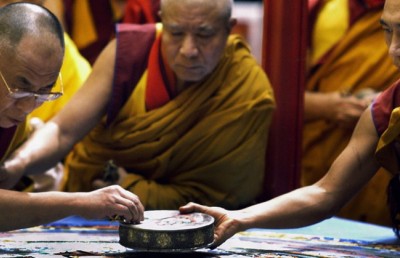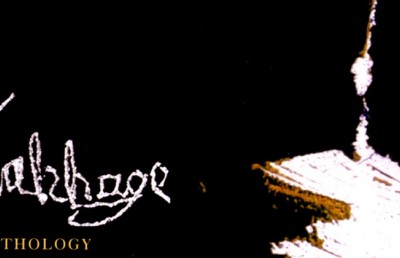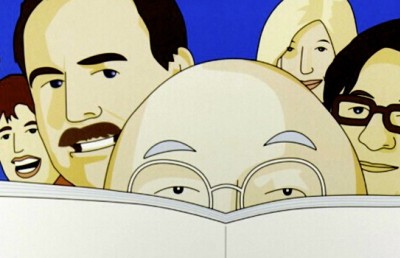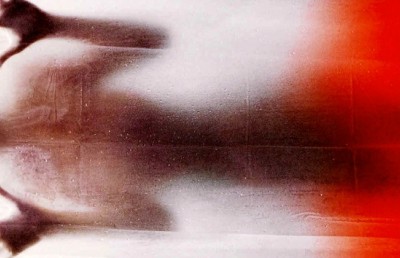Psycho Redux
Appropriating Hitch
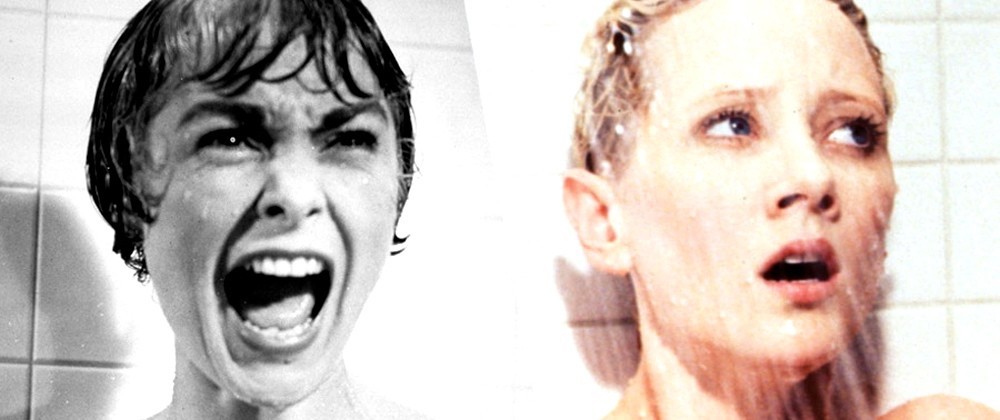
Six years old, Gus Van Sant’s remake of Hitchcock’s Psycho has already received its fair share of bemusement and criticism. Much of the reaction surrounding the film dealt not only with the shock of seeing such a heralded horror classic remade, but remade in the particular way it was: without a direct audience friendly reason. Horror classics have been remade since the beginning of narrative cinema (Nosferatu, King Kong, Dracula, Frankenstein, Dr. Jekyll & Mr. Hyde, The Thing, The Innocents, Invasion of the Body Snatchers, The Cat People, Night of the Living Dead) and two other modern classics have been toppled since Psycho, The Texas Chainsaw Massacre and Dawn of the Dead (not yet released). But none of the previous directors approached their redux with the same attitude as Van Sant: to remake it with the same basic script, music, characters, mise-en-scène, and shooting style (or as Van Sant himself has half-erroneously stated, a ‘shot by shot’ remake). Most people, academics and audiences alike, wondered, why bother? And Van Sant (and others on his behalf) has responded with a bevy of varied reasons: a postmodern recycling/pastiche of a hallowed piece of art which is self-validated by its mere existence; an ‘appropriation art’ which guards against the fetishisation of art objects; a ‘cover’ version for a generation who never even heard of the original; or simply a personal mission on the part of Van Sant (he made an earlier trial run by parodying the shower scene used by the “Our Lady of Laughter Theatre Group in Los Angeles, 1979). Some of the audience anger against Van Sant’s remake is directed at the apparent lack of creativity behind such a project by assuming it is a cheap, exploitative consumerist device to capitalize on the “Psycho” name. Given Van Sant’s previous work, a valid response to this would be to see Van Sant’s remake as in fact a direct critique of this Hollywood mindset that champions ‘safe’ and ‘marketable’ products (sequels, remakes, adaptations of successful comics, television shows, etc.). In fact, the only reason that Universal studio gave him the large budget necessary to make this film is because his previous film Good Will Hunting made a load of money.
What is fascinating about the film is that even though Van Sant’s tagline of doing a ‘shot by shot’ remake is almost accurate, and the film does remain very faithful to the original’s script, characters, running time, mise-en-scène, etc., it still is and feels like a very different film. Which goes to show just how nuanced film art is and the countless variables at play in such a multi-faceted and collaborative art. For example, the decision to shoot in color and cast (obviously) different actors for the same roles already signals the possibility for dramatic change, but it is up to the director whether to accentuate or downplay these differences. Van Sant (along with DP extraordinaire Chris Doyle) could have chosen a color and lighting scheme that would have minimized the differences between black and white and color by trying to appropriate the lighting and tone of Hitchcock’s original. For example, composer Bernard Herrmann said that his decision to compose the soundtrack using only strings was an attempt to capture musically the film’s stark monochromatic visual style. Van Sant could have done the same by employing darker colors and a chiaroscuro lighting style instead of the bright pastel colors and garish lighting he ended up choosing. The same could be said about Van Sant’s choice of actors and his direction of the actors. The single overriding effect of Van Sant’s Psycho, at least for people familiar with the original, is that it forces us to ‘watch’ two films simultaneously: his version with our eyes, and Hitchcock’s original with our ‘mind’s eyes’.
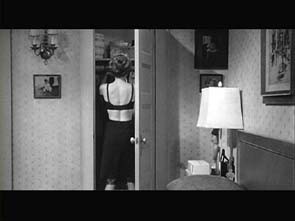
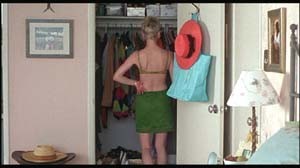
The reason for this, and this is where the artistry of the film comes in, is that Van Sant has made a film that is at once identical to and very different from the original. This is why you have some critics complaining about how similar the two films are, while other critics fall over themselves describing the many differences. None more than Thomas M. Leitch in his amusing and helpful essay “101 Ways to Tell Hitchcock’s Psycho from Gus Van Sant’s.” 1 To further the point, after reading through his essay I could note at least a dozen other substantial differences.
In most of the latter cases, critics have pointed out the differences without elaborating what, if anything, the differences may imply in terms of the film’s meaning. This is what I’ll concentrate on for the remaining of this essay. I’ll begin at the beginning, since the change here is one which stands out as a common reason for taking on remakes: updating to take advantage of technological evolution. 2 According to Hilton A. Green (Assistant Director on the original and technical advisor in the 1998 version) for the film’s opening Hitchcock wanted a continuous helicopter shot moving from an aerial vista of Phoenix to an on location hotel, and into the window to discover the two lunch time lovers. 3 I can see why Hitchcock would have wanted this, since it would have been a direct and forceful introduction to one of his favorite thematics, the horror manifested within the everyday. Apparently they tried many times but the movement was too unsteady as a credit shot, so they ended up appropriating the single continuous shot with a series of pans/dissolves and a final cut to a studio set-up. Van Sant was aware of this, as we learn on the documentary featured on the DVD release of his Psycho (The Path to Psycho). And he would be, since Hilton A. Green worked as technical advisor on the remake. When I first saw Psycho 1998 I was struck by the opening shot, which craned in one continuous, unbroken movement from afar of the large hotel, right on through the open window into the room. This was an on location helicopter shot, not a miniature, so the extent of the technological innovation goes beyond camera apparatus. On the same DVD documentary we see ‘making of’ footage of a camera on a crane moving into a studio mock-up of the hotel room. Hence the exterior helicopter shot was digitally matched with the studio shot which picks up from near the window, but the transition is so well done that I have watched the shot on DVD several times without being able to detect when the ‘edit’ occurs. What would Bazin say?
Another inclusion of the understandable variety is the extended overhead shot during the shower scene of Marion Crane falling over the side of the tub. According to Joseph Stefano, the writer of the original screenplay and remake (adapted of course from the Robert Bloch novel), this shot was apparently filmed, but Hitchcock decided against using the shot. Joseph Stefano explains the shot: “I must tell you there was a shot in the shower scene that was never used that was one of the most heartbreaking shots I’ve ever seen, where the camera pulls all the way up, and we look down on the girl lying across the tub, and her bottom is bare. There was objections to using that, and perhaps Hitch felt that it wasn’t really necessary anyway. There was something very tragic about seeing this beautiful figure with the life gone from it.” In fact the shot does appear in the original, but is cut extremely short, lasting merely one second, just long enough to make out Marion’s arm about to pull on the shower curtain. In the Van Sant version the shot lasts four seconds and is, by far, the most gruesome image in the film. Whether its inclusion is one of the film’s few concessions to a jaded contemporary audience or a tribute to Stefano is debatable (to my mind it did not have the effect Stefano alluded to above).
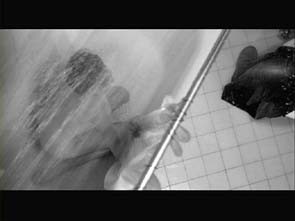
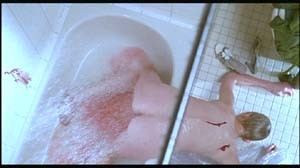
One of the more potentially interesting divergences between the two versions is Van Sant’s decision to change the painting in Norman’s parlor which covers the peephole he uses to spy on Marion in her motel room. In the original version the painting is a rendition of “Susanna and Her Elders.” I have not been able to conclusively identify the version of the painting in the1960 Psycho, although it looks very much like the Anthony Van Dyck version from 1621-22 (the one glaring difference is that Susanna’s arm is raised in the Psycho version but is not in the Van Dyck painting). What is more important is the relevance of the painting’s subject to the film’s theme of voyeurism and male sexual violence-aggression. In the comical original trailer Hitchcock even points to the painting and says, “This picture, has great significance, because….” and then walks away without elaborating.
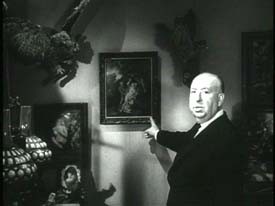
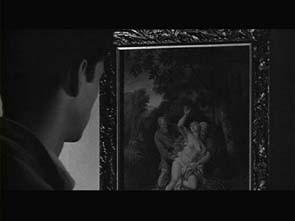
Here is a definition of the painting’s subject:
[Susanna is] a fictional heroine whose innocent virtue triumphed in the end over villainy. The story is set in Babylon during the Exile and tells how Susanna, the wife of a prosperous Jew, was secretly desired by two elders of the community and how they plotted together to seduce her. She was accustomed to go into her garden to bathe, so one day the elders hid themselves there to wait for her. The moment her maids had gone, leaving Susanna alone, the two old men sprang out on the naked, unsuspecting woman. They threatened that unless she gave herself to them both would swear publicly that they had seen her in the act of adultery with a young man, a crime for which the penalty was death. But Susanna spurned them and cried for help. The old men, thwarted, carried out their threat; Susanna was hauled before a court on the false charge, found guilty and condemned to die. At the eleventh hour the young Daniel came forward and cross-examined the elders. By the device of separating them from each other, he elicited conflicting evidence, thus proving Susanna’s innocence. 4
The relevance of this story to Psycho is obvious, and feminist art scholars have used this painting to make a similar point about gender and sexual politics. Of the dozens of versions of this painting one in particular, by the female Renaissance artist Artemisia Gentileschi, is held up as a forceful response to the objectification of the female nude:
Feminist scholars widely concur that gender is typically configured both in written texts and now in film in terms of subject-object relations, in which masculinity is associated with subjectivity and femininity with objectivity” (Glancy 290). Artemisia Gentileschi’s painting, “Susanna and the Elders” (1610) represents this type of subject-object relationship well. The elders represent the subjects. Their gaze is directed toward Susanna who is the object. “To see is to control; to have one’s vision represented is to have one’s perception of the world ratified. To be seen is to be subject to control; to represent women solely as objects of other’s vision denied women their subjectivity” (290). The painting shows Susanna crouching away from the elders with her arms up, attempting to push them away. The elders are portrayed towering above her, staring intently at her half nude body. Susanna’s expression is of disgust and fear. The positioning of Susanna and the elders symbolizes how females were thought of as being ‘below’ males. It also illustrates that Susanna and all females are objects, and the elders or men are the subjects. Gentileschi’s portrait exemplifies rape because it shows the elders forcing themselves onto Susanna, and her disgust and fear of their presence. 5
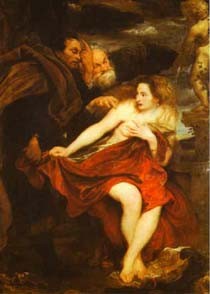
Susanna and the Elders: Van Dyck
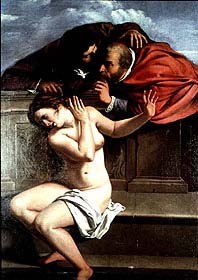
Susanna and the Elders: Artemisia Gentileschi
Frankly, it is hard to identify which painting is in Van Sant’s version, because its appearance is brief and obscured by darkness and reflection, but according to Leitch in the essay noted above it is Venus with a Mirror (perhaps by Titian?). Although the painting does not look like any rendition of Venus that I am familiar with —I was not exhaustive in my search— it is clearly not Susanna and the Elders. Assuming that Leitch did his homework and is right, then the female figure represented in the 1998 version, Venus, is a Roman Goddess usually used to represent an idealized female form (and sometimes also the image of narcissism). Hence the shift from Susanna as a victimized woman who is spied on, objectified, and potentially raped by men, to the image of an idealized female form, strips the painting of its thematic relevancy to both what is happening in the narrative at that time and the film’s subtext of cinematic voyeurism and scopophilia (at least in Hitchcock’s version of Psycho). [[Since this writing the painting has been identified by some, including colleague André Habib as Le Verrou by Jean-Honoré Fragonard (between 1776-80). For French readers I direct you to Habib’s essay for a thorough discussion of what this change entails in terms of the film’s potential meaning. http://www.horschamp.qc.ca/spip.php?article249
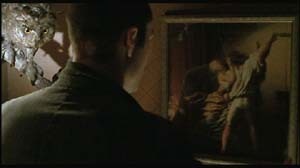
The final divergence I will discuss comes in the film’s ending and is a case of Van Sant (consciously or not) elaborating on the favorite Hitchcockian thematic noted earlier. Whereas the original ends a few seconds after we see the car being hauled out of the swamp, in the remake the camera continues to slowly crane up to reveal the mundane police and media activity surrounding the swamp and continues on during the credits for well over four minutes. The first time I had seen Van Sant’s version this ‘divergence’ is the one that had the strongest emotional impact on me, precisely because I was so accustomed to experiencing this shot as the one that finally brought about a conclusion to Norman’s nightmarish world. Punctuating the emotional ‘estrangement’ is Bill Frissell’s deliciously twisted guitar improv on the famous Herrmann theme, appropriately called ‘Weepy Donuts.’ The camera continues to crane higher up, leaving the scene of the crime and resting on a rural embankment and the distant sight of cars driving along the highway (a foreshadowing of Gerry?). The extremely long take lasts 4’17” and forms a nice bookend with the film’s opening long take of 1’33”. The extended duration has the effect of prolonging the horror, and referring back to the classic Hitchcock theme of situating the horror in the everyday. By ending on the car being pulled out of the swamp the original remains with the specifics of Norman Bates, but by taking us away from the Bates/Crane car to the anonymous cars passing by in the distance, Van Sant’s film places the threat back into the anonymity of the everyday. The recessional movement away from the film’s immediate source of the threat to the anonymous recalls the famous dolly back out of the tenement flat where a murder is being committed in Frenzy. Rather than taking us into the room to witness this singular murder, Hitchcock has the camera dolly back down the stairs, straight back across the street moving through the busy horizontal street traffic (with a hidden cut masking the transition) to stop at the opposite pavement framing the entire apartment building and portions of the adjoining buildings. In moving from the quiet, specific, singular murder (the killer’s apartment) to the noisy, general everyday (the whole apartment complex, street, adjoining buildings, people, etc.), the shot, like Sant’s finale to Psycho, is a succinct summation of the Hitchcockian theme of the horror in the everyday.
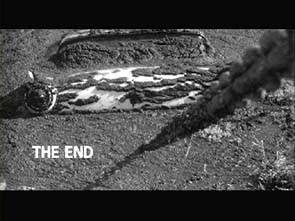
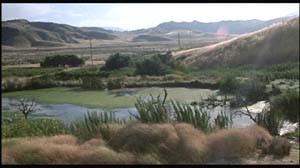
Notes
- Literature/Film Quarterly 28/4, 2000: 269-273. ↩
- The classic case study for this is John Carpenter’s 1982 remake of Christian Nyby’s 1953 The Thing. The state of the special effects technology in 1953 did not allow the filmmakers to realistically depict the shape-shifting monster featured in Joseph W. Campbell’s short story “Who Goes There?”. With advances in special effects technology Carpenter and SPFX artist Rob Bottin where able to do justice to the original story’s chameleon monster in 1982. ↩
- From an interview in the documentary The Making of Psycho on the 1960 Psycho DVD ↩
- Dictionary of Subjects & Symbols in Art. James Hall, introduction by Kenneth Clark, Harper Row Publishers, New York, 1974, 294. ↩
- Glancy, Jennifer A. “The Accused: Susanna and her Readers.” Feminist Companion to Esther, Judith, and Susanna. Ed. Athalya Brenner. Sheffield, England: Sheffield Academic Press Ltd, 1995. 289-295; cited in Renee Hultman, “Susanna, the Virtuous” (accessed January 30, 2004) ↩



